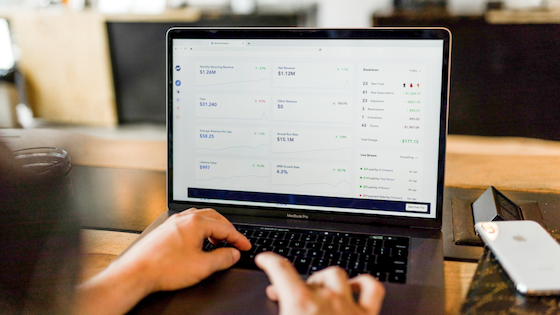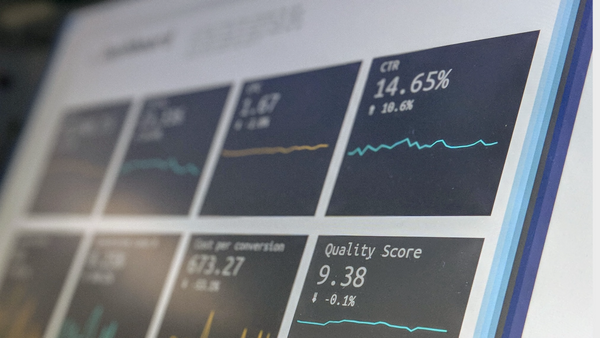The Requirements To Become A Seller
On Amazon.com
It wasn’t long ago when we adopted the term “to google” something when you needed to look up information online. Google became a verb. Due to Google’s search engine dominance, people don’t exactly “google” things on Bing, and I wonder if anyone ever “binged” anything? While Google has become synonymous with search, Amazon may soon (if not already) be synonymous with shopping.
According to a new study from Feedvisor, 89% of U.S. Consumers are more likely to buy products from Amazon than other ecommerce sites. Needless to say, Amazon is the leader in online sales with no sign of slowing down anytime soon. Can you, as an entrepreneur living in this day and age, afford NOT to sell to the greatest congregation of consumers (i.e., Amazon users)? If you want to be where the consumers are, let’s dive into what you need to get started selling on Amazon.

What Kind Of Seller Can You Be?
If you are mapping out your Amazon entry, it is essential that you understand the distinction between the different types of sellers. There are 3 somewhat established options that you may fall into.
1.) Private Label – The most popular approach you will find is private labeling. Private labeling for Amazon means you sell products of your choosing under your own private brand. After deep research on what product to sell, you will need to contact suppliers who can produce your product in bulk. Creating a brand and product is not an easy feat. However, it can certainly be a fun and interesting journey. The great thing about this path is that you have total control over the product and an extremely high ceiling for growth potential.
2.) Wholesale – Wholesale on Amazon is selling products from an established brand. You will have to contact the manufacturer to get permission to resell on the Amazon Marketplace. It is required that you attain a wholesale license. Doing wholesale can be tough when it comes to finding manufacturers who aren’t already selling directly through Amazon. Additionally, unless you have an exclusive deal with the manufacturer, there are other sellers competing to win the “buy” box which can ultimately cuts into your margins. On the bright side, doing wholesale will allow you to avoid the grunt work of building a trusted brand.
3.) Arbitrage – The concept of arbitrage is simple. You find low priced items (typically from a retailer such as Walmart, Target, Marshall, etc.) and resell them at a higher price. Finding a low priced item that will be profitable at resale can be a bit of an art. Once mastered, retail arbitrage can be a great way to start selling on Amazon because the upfront costs and risks are low. However, arbitrage is not a scalable long-term strategy.

How to Register for an Amazon Seller Account
To start selling on Amazon, you will need to sign up for a seller account. It’s a pretty straightforward process and will take roughly 30 minutes. To help you prepare ahead of time, here are the necessary information you will need to sign up:
- Legal Business Name
- Contact information
- Your Address
- Email ID
- Credit card with a valid billing address
- Tax Information (SSN or company’s federal tax ID number)

An Individual or Professional Plan?
When you create a selling account, you have the option to choose between an Individual or Professional Selling Plan. As with most business solutions, invested users are willing to pay a higher price to access more features while others will not need the extra benefits. Here are our thoughts to help you choose the right selling plan.
Professional Selling Plan -Registering as a Professional Amazon seller will cost $39.99 per month for unlimited items and full access to features and benefits such as the analytics tools, advertisements, buybox, and more. Because these tools are geared towards scaling business growth, we recommend choosing the Professional Selling Plan only if you’re a committed seller and are serious about launching a business. Basic math will tell you that this plan is worth it as long as you’re selling 40 items or more each month.
Individual Selling Plan – Individual sellers pay a $0.99 fee on every item sold. Unfortunately, many new sellers lack the experience to know exactly how many items they can expect to sell each month through the platform, so choosing the Individual Selling Plan is a safer option. If you intend to do retail arbitrage or sell only a few items, the Individual Selling Plan would be better alternative—you can also easily make the switch to a Professional Seller at anytime.

Setting Up A Payment System
When expanding your business globally, you have to consider converting global earnings to your local currency. Many sellers don’t realize they are given the option to use alternative service providers like PingPong to help avoid high conversion fees! PingPong helps e-commerce sellers bring home more hard earned profits by providing the lowest possible rates. If you have global suppliers who are outside the U.S (most commonly China), PingPong can also help make secure payments to your supplier at a lower cost.

The Logistics Chain
Your logistics chain starts with your supplier and ends at the doorstep of your FBA warehouse However, there are some links in between that may be necessary to ensure the integrity of that supply chain. These links aren’t always required, but you should be aware of all the options you have.
Prep centers (3PL or Third-Party Logistics Center) – A prep center is a facility that will prep your shipment and inspect it before sending it to the FBA warehouse. They can also print and apply FNSKU labels to individual product units. Sellers typically do this for their first batch of items to inspect inventory and to ensure items are loaded without issue. Hiring a prep center does impact your margins since standard sized items can cost between $0.8 and $1 to prep. This also means a lengthier shipment period and the additional cost of adding a stop on your shipping route. Find out first where exactly your FBA warehouse is, and then search for a prep center that is nearby to save on both the cost and time. Although the initial cost might be a tad more, we always suggest adding this extra layer of security into your supply chain so that potential labelling mistakes or damaged goods don’t make it into the FBA center and jeopardize your good standing with Amazon as a seller.

Freight Forwarders – A freight forwarder arranges the shipment of your cargo from one point to another. They keep track of all the rates and possible shipment methods with various carriers and give you the most economic option according to your needs. Whether you wish to ship by air, ship by sea, do an express shipment, or arrange air to ground transfers, a freight forwarder will handle everything. Your supplier will likely have a freight forwarder they work with and will be able to quote your shipment based on what their freight forwarder charges. You can also do this yourself or ask around to see if you can find a cheaper way to ship your items.
Customs agents – You can hire a customs broker to represent you in case your inventory faces any issues entering the US. Customs brokers can pay import duties and taxes to ensure that you spend as little time at customs as possible. However, you may not need one if you are importing common items that don’t require any special documentation and the declared value of your items do not exceed $2500.
In light of recent trade war tensions, it may pay off to reach out to a customs broker simply to ensure you have everything covered. It may be possible that new import duties have been imposed on certain types of goods. While the trade war with China hasn’t really impacted the ability of Amazon sellers to import their goods, it’s best to take precautions. Also, many shipping companies now offer DDP shipping, where they handle all of the legwork for you, including import and customs!

Summary
In conclusion, selling on Amazon might be the greatest business opportunity of our lifetime. The process of getting started may seem complicated. However, once you start you will see that each step is actually rather simple. After all, it is a path paved by tens of thousands of Amazon sellers already, and there are so many options and services to help you along the way. You’re out of excuses for not selling on Amazon!
Psst… There’s more savvy know-how to grow your
Amazon business where that came from.
The Requirements To
Become A Seller on Amazon.com
It wasn’t long ago when we adopted the term “to google” something when you needed to look up information online. Google became a verb. Due to Google’s search engine dominance, people don’t exactly “google” things on Bing, and I wonder if anyone ever “binged” anything? While Google has become synonymous with search, Amazon may soon (if not already) be synonymous with shopping.
According to a new study from Feedvisor, 89% of U.S. Consumers are more likely to buy products from Amazon than other ecommerce sites. Needless to say, Amazon is the leader in online sales with no sign of slowing down anytime soon. Can you, as an entrepreneur living in this day and age, afford NOT to sell to the greatest congregation of consumers (i.e., Amazon users)? If you want to be where the consumers are, let’s dive into what you need to get started selling on Amazon.

What Kind Of Seller Can
You Be?
If you are mapping out your Amazon entry, it is essential that you understand the distinction between the different types of sellers. There are 3 somewhat established options that you may fall into.
1.) Private Label – The most popular approach you will find is private labeling. Private labeling for Amazon means you sell products of your choosing under your own private brand. After deep research on what product to sell, you will need to contact suppliers who can produce your product in bulk. Creating a brand and product is not an easy feat. However, it can certainly be a fun and interesting journey. The great thing about this path is that you have total control over the product and an extremely high ceiling for growth potential.
2.) Wholesale – Wholesale on Amazon is selling products from an established brand. You will have to contact the manufacturer to get permission to resell on the Amazon Marketplace. It is required that you attain a wholesale license. Doing wholesale can be tough when it comes to finding manufacturers who aren’t already selling directly through Amazon. Additionally, unless you have an exclusive deal with the manufacturer, there are other sellers competing to win the “buy” box which can ultimately cuts into your margins. On the bright side, doing wholesale will allow you to avoid the grunt work of building a trusted brand.
3.) Arbitrage – The concept of arbitrage is simple. You find low priced items (typically from a retailer such as Walmart, Target, Marshall, etc.) and resell them at a higher price. Finding a low priced item that will be profitable at resale can be a bit of an art. Once mastered, retail arbitrage can be a great way to start selling on Amazon because the upfront costs and risks are low. However, arbitrage is not a scalable long-term strategy.
How to Register for a an Amazon Seller Account
To start selling on Amazon, you will need to sign up for a seller account. It’s a pretty straightforward process and will take roughly 30 minutes. To help you prepare ahead of time, here are the necessary information you will need to sign up:
- Legal Business Name
- Contact information
- Your Address
- Email ID
- Credit card with a valid billing address
- Tax Information (SSN or company’s federal tax ID number)
An Individual
or
Professional Plan?

When you create a selling account, you have the option to choose between an Individual or Professional Selling Plan. As with most business solutions, invested users are willing to pay a higher price to access more features while others will not need the extra benefits. Here are our thoughts to help you choose the right selling plan.
Professional Selling Plan -Registering as a Professional Amazon seller will cost $39.99 per month for unlimited items and full access to features and benefits such as the analytics tools, advertisements, buybox, and more. Because these tools are geared towards scaling business growth, we recommend choosing the Professional Selling Plan only if you’re a committed seller and are serious about launching a business. Basic math will tell you that this plan is worth it as long as you’re selling 40 items or more each month.
Individual Selling Plan – Individual sellers pay a $0.99 fee on every item sold. Unfortunately, many new sellers lack the experience to know exactly how many items they can expect to sell each month through the platform, so choosing the Individual Selling Plan is a safer option. If you intend to do retail arbitrage or sell only a few items, the Individual Selling Plan would be better alternative—you can also easily make the switch to a Professional Seller at anytime.
Setting Up A
Payment System

Amazon will charge any fees you incur to the credit card you provided at registration. Having a good understanding of the various Amazon fees can help you find smarter solutions to avoid some of them. Try to avoid the common mistakes made by sellers looking to expand globally—overlooking Amazon’s hidden currency conversion fee.
Amazon automatically converts global earnings to your local currency at an unfavorable rate of 3.5-4.5%. Many sellers don’t realize they have the option to use alternative service providers like PingPong to help avoid high conversion fees. PingPong helps e-commerce sellers bring home more hard earned profits by providing the lowest possible rates. If you have global suppliers who are outside the U.S (most commonly China), PingPong can also help make secure payments to your supplier at a lower cost. When you start selling on Amazon, pay proper attention to fees to see if you can bring them down.
The Logistics Chain

Your logistics chain starts with your supplier and ends at the doorstep of your FBA warehouse However, there are some links in between that may be necessary to ensure the integrity of that supply chain. These links aren’t always required, but you should be aware of all the options you have.
Prep centers (3PL or Third-Party Logistics Center) – A prep center is a facility that will prep your shipment and inspect it before sending it to the FBA warehouse. They can also print and apply FNSKU labels to individual product units. Sellers typically do this for their first batch of items to inspect inventory and to ensure items are loaded without issue. Hiring a prep center does impact your margins since standard sized items can cost between $0.8 and $1 to prep. This also means a lengthier shipment period and the additional cost of adding a stop on your shipping route. Find out first where exactly your FBA warehouse is, and then search for a prep center that is nearby to save on both the cost and time. Although the initial cost might be a tad more, we always suggest adding this extra layer of security into your supply chain so that potential labelling mistakes or damaged goods don’t make it into the FBA center and jeopardize your good standing with Amazon as a seller.
Freight Forwarders – A freight forwarder arranges the shipment of your cargo from one point to another. They keep track of all the rates and possible shipment methods with various carriers and give you the most economic option according to your needs. Whether you wish to ship by air, ship by sea, do an express shipment, or arrange air to ground transfers, a freight forwarder will handle everything. Your supplier will likely have a freight forwarder they work with and will be able to quote your shipment based on what their freight forwarder charges. You can also do this yourself or ask around to see if you can find a cheaper way to ship your items.
Customs agents – You can hire a customs broker to represent you in case your inventory faces any issues entering the US. Customs brokers can pay import duties and taxes to ensure that you spend as little time at customs as possible. However, you may not need one if you are importing common items that don’t require any special documentation and the declared value of your items do not exceed $2500.
In light of recent trade war tensions, it may pay off to reach out to a customs broker simply to ensure you have everything covered. It may be possible that new import duties have been imposed on certain types of goods. While the trade war with China hasn’t really impacted the ability of Amazon sellers to import their goods, it’s best to take precautions. Also, many shipping companies now offer DDP shipping, where they handle all of the legwork for you, including import and customs!
Summary
In conclusion, selling on Amazon might be the greatest business opportunity of our lifetime. The process of getting started may seem complicated. However, once you start you will see that each step is actually rather simple. After all, it is a path paved by tens of thousands of Amazon sellers already, and there are so many options and services to help you along the way. You’re out of excuses for not selling on Amazon!
Psst… Want more of the latest tips to grow your
Amazon business










